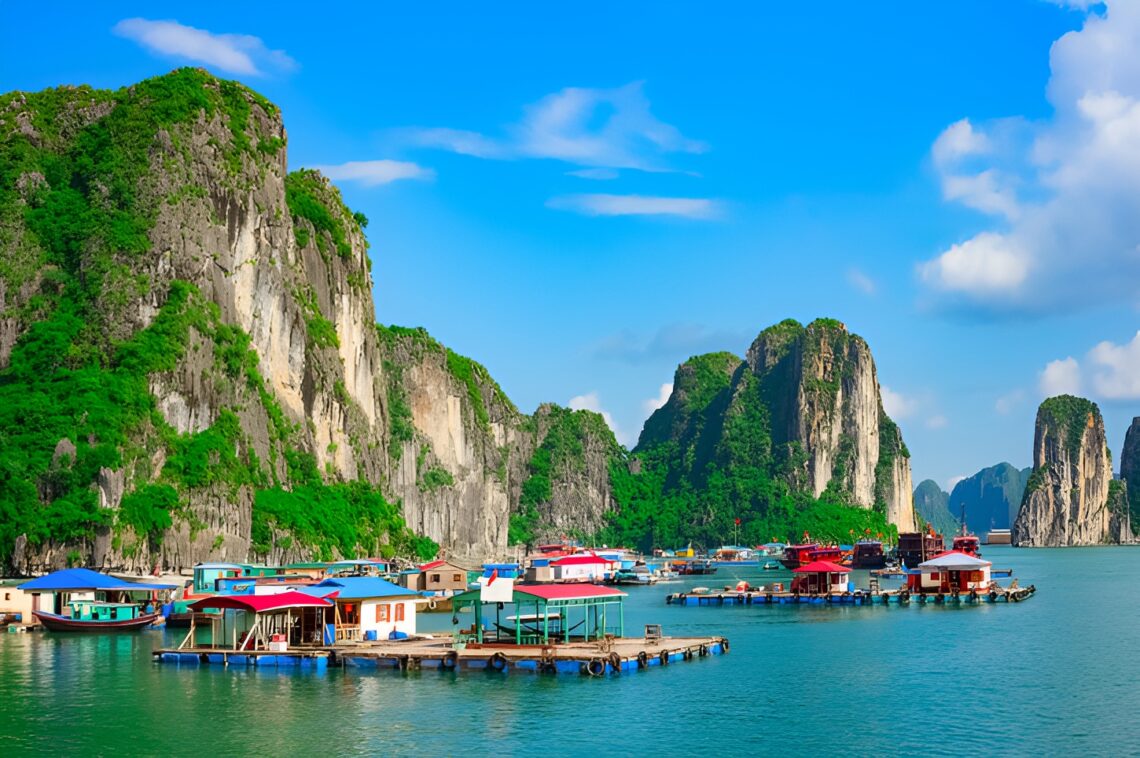Best Historical Sites in Vietnam is a country steeped in history, offering travelers a unique blend of ancient civilizations, colonial influences, and wartime landmarks. From the grand imperial palaces of Hue to the hidden Cu Chi Tunnels, these sites provide a fascinating insight into the country’s past. Exploring Vietnam’s historical landmarks allows visitors to experience the nation’s deep cultural heritage and the resilience of its people.

Whether you’re drawn to the ancient temples of My Son Sanctuary or the modern historical significance of sites like the Reunification Palace, Vietnam offers something for every history enthusiast. The country’s historical sites not only reflect its rich past but also its journey toward independence and unity. In this guide, we explore some of the best historical places to visit in Vietnam, each offering a unique story waiting to be discovered.
Here are some of the best historical sites in Vietnam.
1. Hue’s Imperial City:

Situated in the country’s center, the Imperial City of Hue is one of Vietnam’s most important historical sites. This UNESCO World Heritage Site, which was once the political and cultural center of the Nguyen Dynasty, is home to palaces, temples, and pagodas. Moats and substantial stone walls encircle the complex, giving it a regal and engrossing atmosphere. Visitors can discover the Forbidden Purple City, Royal Tombs, and gardens relics of the opulent past by meandering through the old gates and corridors. Hue provides a fascinating look into Vietnam’s monarchy and distinctive architectural designs.
2. Tunnels in Cu Chi:
The history of Vietnam’s wars would not be complete without the Cu Chi Tunnels, which are close to Ho Chi Minh City. During the Vietnam War, the Viet Cong used this intricate system of subterranean tunnels to carry out surprise attacks and move undetected. The more than 250 kilometers of tunnels were used as living spaces, storage areas, and communication channels in addition to being a means of transportation. Today, visitors can explore war memorials, crawl through some of the restored tunnels, and view displays of weapons, booby traps, and secret entrances. The Cu Chi Tunnels are evidence of the Vietnamese people’s tenacity and inventiveness in times of war.
3. The Sanctuary of My Son:

My Son Sanctuary is a historic Hindu temple complex close to Hoi An in the province of Quang Nam. Originally the center of the Champa Kingdom’s religious life, this UNESCO World Heritage Site was established in the fourth century. The red-brick temples honor Hindu gods, especially Shiva, and demonstrate how Indian culture influenced ancient Vietnam. Many of the buildings that were severely damaged during the Vietnam War still stand today, providing a window into the artistic and spiritual legacy of the Cham people. Because My Son is encircled by dense jungle, history buffs will find it to be a tranquil and atmospheric location.
4. Hanoi Hilton’s Hoa Lo Prison:
One of the most notorious locations in Vietnam’s recent history is Hoa Lo Prison, also referred to as the “Hanoi Hilton,” and it is situated in the country’s capital city of Hanoi. The prison was first constructed by French colonists to house Vietnamese revolutionaries, but it later gained notoriety for housing American POWs during the Vietnam War. The prison is now used as a museum, with displays describing its involvement in the war and the colonial era. Historical photos, artifacts from the prison, and rebuilt cells are available for viewing by guests. Hoa Lo Prison serves as a reminder of both the complicated history of Vietnam’s independence movement and the harsh realities faced by political prisoners.
5. Ho Chi Minh Mausoleum:

One of the most significant national monuments in Vietnam is the Ho Chi Minh Mausoleum in Hanoi. Ho Chi Minh, the revolutionary leader and former president of Vietnam, is buried in this imposing building. Ho Chi Minh is renowned for uniting Vietnam and guiding it toward independence from French colonial rule. The nation’s respect and admiration for Ho Chi Minh’s leadership is symbolized by the mausoleum, which is situated in Ba Dinh Square, the site of his 1945 declaration of Vietnam’s independence. By going into the mausoleum and seeing the preserved body, visitors can pay their respects. It is an important historical and cultural site because of the nearby One Pillar Pagoda, a museum, and the former home of Ho Chi Minh.
6. Palace of Reunification:
A representation of the end of the Vietnam War and the reunification of the nation is the Reunification Palace in Ho Chi Minh City. It was the presidential residence and the government’s command center in South Vietnam when it was known as the Independence Palace. The war ended, and Saigon fell on April 30, 1975, when tanks from the North Vietnamese army broke through the gates. The palace is still standing today and is open for tours of its underground bunkers, conference rooms, and war command centers. An important historical location for comprehending Vietnam’s path toward peace and unification is the Reunification Palace.
7. Old Quarter of Hanoi:

Hanoi’s Old Quarter is a living museum that has preserved centuries’ worth of culture and history, despite not being a single historical monument. Hanoi’s Old Quarter offers a glimpse into the city’s past with its traditional Vietnamese houses, French colonial architecture, and winding streets. For more than a millennium, this vibrant area has functioned as the center of the city, a center of trade, politics, and culture. Ancient temples, neighborhood marketplaces, and historic sites like the Bach Ma Temple and the Long Bien Bridge are all open for exploration by tourists. Shopping for traditional crafts and taking in Vietnam’s vibrant street food culture are two excellent things to do in the Old Quarter.
Conclusion
Vietnam’s rich tapestry of historical sites offers an immersive journey through its ancient, colonial, and modern history. From the royal grounds of Hue to the war-torn Cu Chi Tunnels, each landmark tells a story of resilience, culture, and transformation. Visiting these places not only enriches your understanding of Vietnam but also allows you to appreciate its unique blend of past and present.
Before embarking on this historical adventure, ensure you have the necessary travel documents, including a Vietnam Visa. Obtaining a Vietnam visa is a straightforward process that ensures a smooth travel experience, giving you access to explore the country’s magnificent heritage. With your visa in hand, you can fully enjoy the incredible historical sites and cultural experiences Vietnam has to offer.





